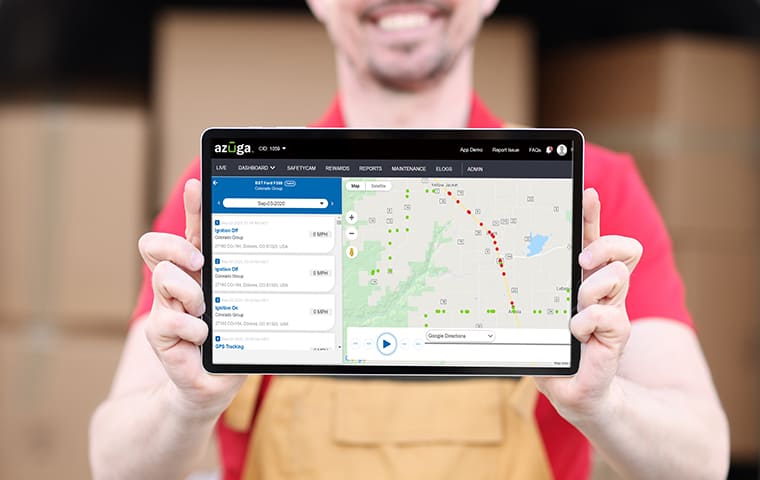Route optimization is the tactic that allows fleets to get to their destinations in the most efficient way possible, including all of the stops along the way. There are many different methods that fleets use to achieve this, but many use route optimization software. Route optimization software utilizes the power of algorithms, GPS, and traffic data to find the route with the least amount of hindrances. It is one of the most valuable tools in a fleet manager’s arsenal, and without it, fleets are left inefficient and struggling to keep up with their competitors. Here we will discuss route optimization, how it works, its benefits, and how fleets can harness it to their advantage.
How Does Route Optimization Work?
There are three different methods for route optimization that different types of fleets have used in the past and continue to use now. As new technologies become available, some of these methods become more attainable than others. The three primary methods are as follows:
- Static Routing: In static routing, route planners only change their drivers’ routes on an annual or semi-annual basis. This method is best for long-haul fleets or fleets with consistent delivery locations who deliver on the same schedule every trip. This is the least popular method of route planning these days.
- Dynamic Routing: Using this method, route planners change routes daily, considering traffic patterns and historical data. This method is more up-to-date, as dispatchers can change routes up until the truck is loaded. Businesses whose routes change every day are more likely to use this method.
- Real-time Dynamic Routing: Real-time dynamic routing is even more up-to-date than regular dynamic routing. It changes while drivers are on the road, as new jobs come in or as traffic patterns change. This is the most popular and efficient route optimization method and the one that we will discuss in this article.
Benefits of Route Optimization Software
Real-time dynamic routing takes advantage of route optimization software to account for traffic patterns and incoming jobs. Of course, all route optimization software is different. Still, there are several key features that you should look for in whatever software you choose to make sure you are getting these full benefits of route optimization.
No. 1: Updates in Real-Time
Of course, if you want to conduct real-time dynamic routing, you need your software to update in real-time. If your software updates in real-time, this means that it will update whenever a new order comes in or whenever one is canceled. It also updates automatically whenever traffic conditions change, such as an accident, road closure, weather event, or any other issue that might arise on the road. Of course, your driver wants to avoid any of these issues to keep moving as quickly and efficiently as possible, so this is a critical feature.
No. 2: Integrates with Fleet Management Software
If your route optimization software doesn’t integrate with your fleet management software, it won’t be helpful to you. Your route optimization software must be able to pick up the jobs that come in or get canceled so it can update your drivers. Otherwise, your drivers may be driving to customers who no longer need them and be missing customers who do need them. Furthermore, integrating with fleet management software allows the software to gather customer information. There is a lot of crossover between these two software solutions, so it is essential to have both for a comprehensive fleet management solution.
No. 3: Tracks Historical Data
All route optimization software uses machine learning and algorithms. Still, you need to ensure that the route optimization software that you choose takes advantage of historical data to make its route decisions. Historical data is instrumental in route planning software. It can come from customers’ and drivers’ past experiences, allowing the software to develop a more accurate idea for how long a route should take. An example would be when route optimization software uses historical data to estimate the traffic in a specific area at a particular time of day. In this way, it can plan for school zones or rush hour. Even better, it can store information like customers’ preferred time slots and availability so it can plan routes around customers’ schedules. Using historical data to your advantage, you can build a foundation to create the best routes going forward.
No. 4: Easily Communicate Routes
Communication is key when it comes to any fleet management task, and route optimization is no exception. You need to be able to communicate routes between drivers, customers, and managers.Routes are automatically updated with route optimization, so managers don’t have to call drivers while they’re on the road and worry about putting them in danger. Furthermore, drivers don’t have to call customers and update them when they’re close. The system automatically updates customers when the driver is nearby, so the driver can focus on the road. This is much safer for drivers, as being on the phone is a dangerous distraction that puts everyone on the road at risk.
Install Route Optimization Software Today!
If you’re looking to make your fleet more efficient and productive, it’s time to install route optimization software. And who better to consider than Azuga, whose fleet solutions improve operations for fleets all over the country every day? Azuga’s route optimization software offers all of the features mentioned in this article and more, and you’re sure to be impressed with the results. Try our software for yourself and see what you’re missing with a free demo!








